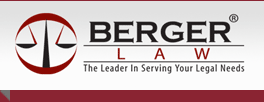H-1B, H-1B1 (Singapore), E-3 Visas (Australian)
The U.S. offers nonimmigrant visas for specialty occupations in demand by American companies. These areas include medicine, health care, the sciences, biotechnology, computer technology, and business.
Many of these visas fall under the H category for temporary workers. While H-2A and H-2B pertain to agricultural workers and H-3 to trainees in fields other than academic or medical, the H-1B visas applies to these specialty occupations. Residents of Singapore and Chile qualify for the H-1B1 visa.
There's another specialty occupation visa outside the H category. That is the E-3, which is unique to Australian foreign nationals.
What is the H-1B Visa?The primary and most sought-after visa by United States (U.S.) companies, the H-1B visa applies to most foreign nationals in specialty occupations. It is valid for three years and can be extended by one additional three year increment. After continual living and working in the U.S. for six years, the H-1B visa holder must reside abroad for one year before becoming eligible for another visa.
If circumstances interfere with continual residence or work, it is possible to recapture the time lost and allow the employee to stay for that additional amount of time if work remains available. Companies need to consult with an immigration lawyer to see if recapturing is possible for their unique situations.
How can a company secure the H-1B visa?Only 65,000 H-1B visas are issued every fiscal year. There is a cap of 20,000 for those who hold Master's Degrees from the U.S.
Besides the cap, these visas can be difficult to secure. Employers must submit a Labor Condition Application and attest that they are not displacing American workers. Companies cannot replace laid-off workers with H-1B visa holders within a certain timeframe and no hiring of H-1B workers during strikes, lockouts, or other labor dispute is allowed. H-1B workers are also subject to prevailing wage levels. These facts must be established in the Labor Condition Application.
Due to these requirements, it is essential to retain skilled guidance with the visa process, especially the Labor Condition Application. Contact Berger Law to schedule an appointment and review H-1B visa requirements.
What is the H-1B1 Visa?The H-1B1 is also a specialized occupation visa but it is limited to citizens of Chile and Singapore. It arose out of the U.S./Chile Free Trade Agreement and the U.S./Singapore Free Trade Agreement.
It allows additional specialty workers beyond the cap of 65,000 assigned to the H-1B. The H-1B1 allows another 1,400 specialty workers from Chile and 5,400 from Singapore. To qualify, participants must have specialty knowledge and at least a U.S. undergraduate degree or its equivalent. Employers will need to sponsor H-1B1 applicants.
Spouses and unmarried children under age 21 can accompany the H-1B1 worker to the U.S., but they are not allowed to work without their own work visa. However, they can attend school without a student visa.
Other procedures and requirements are the same as with a general H-1B visa.
What is an E-3?The E-3 visa is limited to Australian nationals and is similar to the H-1B1 visa. Differences include spouses of E-3 holders may work without restrictions and E-3 holders are not included under the H-1B cap. These are subject to a separate quota of 10,500 visas per year. Spouses and children are not included in that cap.
Employers can apply for this visa when hiring Australian citizens. It will not apply to anyone entering the U.S. on the visa waiver program.
Contact An Immigration Attorney at Berger LawVisas for specialty occupations have fewer barriers in some ways, but the procedure to secure them can be very complex. Contact an immigration attorney at Berger Law to ensure a smooth transition for skilled foreign national workers. Call (201) 587-1500 (New Jersey) or (212) 380-8117 (New York) to schedule a consultation.
 Hackensack, New Jersey H-1B, H-1B1 Lawyer Samuel C Berger, PC Home
Hackensack, New Jersey H-1B, H-1B1 Lawyer Samuel C Berger, PC Home



